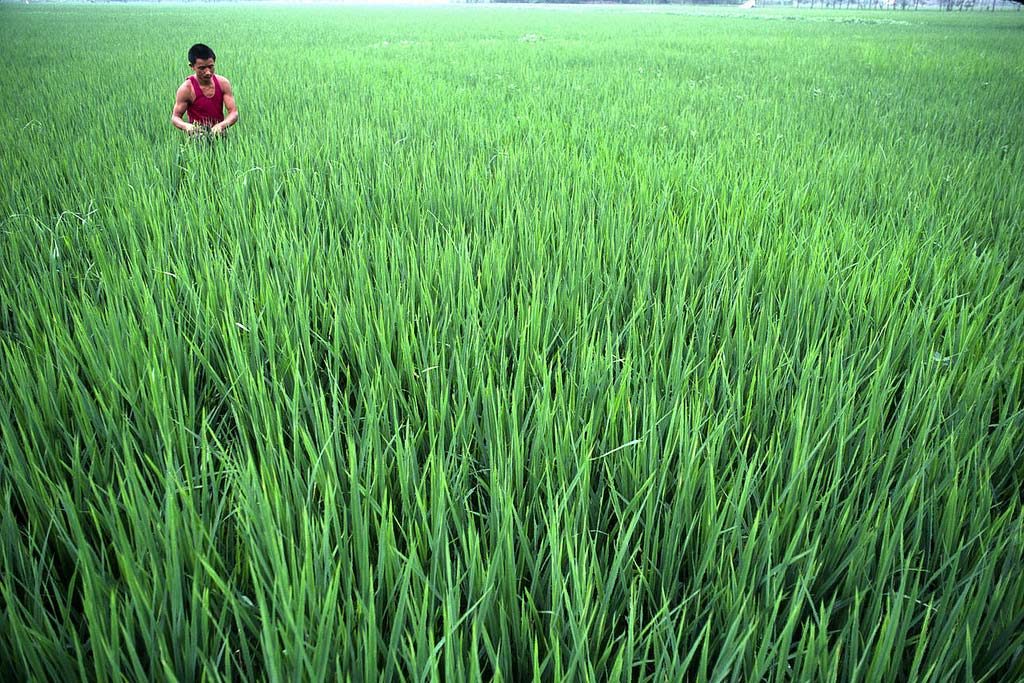‘BRICS’ Countries Well Placed to Help Lead Global Efforts to Tackle Hunger
BRICS, 19 Jun 2017
UN News Centre – TRANSCEND Media Service
16 Jun 2017 – As the clock ticks towards the 2030 deadline for meeting global goals to eradicate hunger and poverty, the United Nations agriculture agency today asserted that five vitally important emerging economies, known collective as the ‘BRICS’ countries, are well positioned to take a leading role in helping the world achieve these targets.
These five countries – Brazil, Russia, India, China and South Africa – form an economic block that accounts for more than 40 per cent of the world’s population and over 20 per cent of global gross domestic product (GDP). Together, they produce more than one-third of global cereal production, with Russia becoming the largest wheat exporter in the world.
“The BRICS countries play an important political role in the international arena. Developing countries around the world look to your successes in economic development over the past few decades as an example to follow,” said Kundhavi Kadiresan, the UN Food and Agriculture Organization (FAO) Regional Representative for Asia and the Pacific, during a statement to the 7th Meeting of the BRICS Ministers of Agriculture, in Nanjing, China.
“Your experiences provide a path that can help us all meet our global collective commitments, namely those of the 2030 Agenda – its 17 Sustainable Development Goals (SDGs) – and the Paris Agreement [on climate change],” added Ms. Kadiresan.
She pointed out that, despite trends towards urbanization, as poverty in the world today is primarily rural, accelerating rural development will be key to achieving the SDGs.
“The question is how can we do this?” continued the regional representative. “Our experiences in countries in different parts of the world have shown that it can best be done through a combination of agricultural growth and targeted social protection, but also through growth in the rural nonfarm economy.”
She underscored that agriculture can be a driver of sustained and inclusive rural growth, saying “In low-income countries, growth originating from agriculture is twice as effective in reducing poverty as growth originating from other sectors of the economy.”
All tools, approaches and technologies must also be accessible to poor farmers in developing countries for increased production and productivity.
An excellent example is South Africa’s Fetsa Tlala, a government-led initiative to support subsistence and smallholder farmers expand cultivated land to food production.
Agricultural Growth
Achieving agricultural growth would require research and development investments, in which BRICS countries could play a leading role as all five have strong agricultural research systems working on developing countries’ challenges. Biotechnology and agro-ecological approaches would also be essential.
Information and communication technologies (ICTs) are becoming more widespread by the day, and they offer a promising approach to address many of the challenges small farmers face with regard to information on prices, weather forecasts, vaccines, financial services, and much more.
FAO is collaborating with the Organisation for Economic Co-operation and Development (OECD) and the International Food Policy Research Institute to make sure these technologies benefit smallholders.
Ms. Kadirelso points out that social protection programmes also play a key role in rural development – reducing poverty, benefitting health and strengthening family farmer confidence.
DISCLAIMER: The statements, views and opinions expressed in pieces republished here are solely those of the authors and do not necessarily represent those of TMS. In accordance with title 17 U.S.C. section 107, this material is distributed without profit to those who have expressed a prior interest in receiving the included information for research and educational purposes. TMS has no affiliation whatsoever with the originator of this article nor is TMS endorsed or sponsored by the originator. “GO TO ORIGINAL” links are provided as a convenience to our readers and allow for verification of authenticity. However, as originating pages are often updated by their originating host sites, the versions posted may not match the versions our readers view when clicking the “GO TO ORIGINAL” links. This site contains copyrighted material the use of which has not always been specifically authorized by the copyright owner. We are making such material available in our efforts to advance understanding of environmental, political, human rights, economic, democracy, scientific, and social justice issues, etc. We believe this constitutes a ‘fair use’ of any such copyrighted material as provided for in section 107 of the US Copyright Law. In accordance with Title 17 U.S.C. Section 107, the material on this site is distributed without profit to those who have expressed a prior interest in receiving the included information for research and educational purposes. For more information go to: http://www.law.cornell.edu/uscode/17/107.shtml. If you wish to use copyrighted material from this site for purposes of your own that go beyond ‘fair use’, you must obtain permission from the copyright owner.
